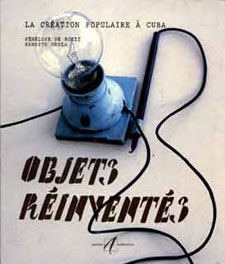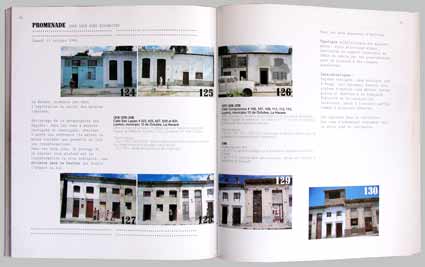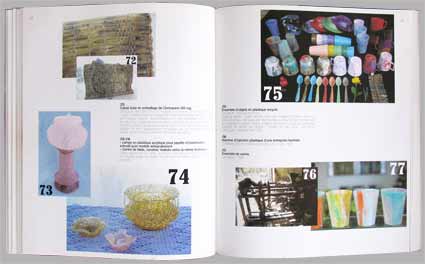coming soon…
Signos 36 – Tomo 00: “Trabaja la raíz para un fruto que no verá” S.F. (The Root Works for Fruit It Will Never See)


Signos 36, 2017
Tabloids are series of newspapers that are produced in relation to specific exhibitions. One side of the newspaper pages, patterns (usually determined by elements within the exhibitions) are printed. These are used as wallpapers to designate particular spaces within the exhibition sites. The rest ofthe newspapers are used to present materials that in some way expand or question the conceptual scope of the exhibition.
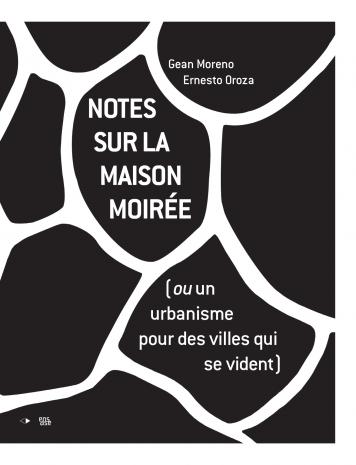
Notes sur la maison moirée (ou un urbanisme pour des villes qui se vident)
Gean Moreno et Ernesto Oroza
Préface : Victor Lévy
Co-édition : Cité du design et École nationale supérieure d’architecture de Saint-Étienne
Six textes composent Notes sur la maison moirée (ou un urbanisme pour des villes qui se vident). Le premier texte, qui a donné son titre à l’ouvrage, montre comment, face à la pénurie et pour résister à la crise des subprimes aux États-Unis, les individus vont devoir réinventer leur habitat, produire des objets hybrides, bâtir une autre vie quotidienne dont les effets vont déborder sur le paysage urbain et le modifier. « Apprendre de Little Haiti » est l’histoire d’objets provisoires installés par les habitants et les ruses que chacun déploie pour implanter un objet inattendu mais essentiel dans ce quartier de Miami. « Treize façons d’observer un dépôt-vente » dresse un portrait de la consommation et des modes de vie à travers une lecture singulière des objets qui se stratifient dans un dépôt-vente. « Treize façons d’observer une landscape nursery » s’attache à décrire les objets stéréotypés d’une pépinière qui envahissent et transforment le paysage urbain. «Modèles de dispersion : notes sur le projet Tabloid» imagine une fable, celle d’une eau tachée par les teintures de cheveux de vieilles femmes qui se déverse dans la ville. La fable se transforme en réalité avec le projet de dispersion d’un motif de design via un tabloïd dans l’espace urbain. Enfin, « Objets génériques » étudie les paramètres physiques des objets les plus ordinaires (palettes de bois, poubelles urbaines, casiers à lait ou échafaudages) et montre comment ceux-ci conduisent à la construction de systèmes complexes.
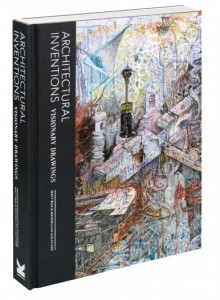
Gean Moreno and Ernesto Oroza featured in new Laurence King “Architectural Inventions” book
Architectural Inventions: Visionary Drawings
By Matt Bua and Maximillian Goldfarb
Continue reading »
Excerpt Magazine
Common Ground
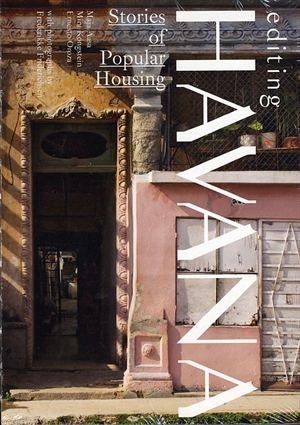
Editing Havana- Stories of Popular Housing
Maja Asaa, Mira Kongstein and Ernesto Oroza
with photographs by Frederikke Friderichsen
ISBN: 9788791984174
Published by Aristo Bogforlag 2011
17×24 cm, 224p
more info
220°C Virus Monobloc
The Infamous Chair
Editors: Arnd Friedrichs, Kerstin Finger
Texts by Hajo Eickhoff, Max Küng, Andrej Kupetz,
and Alice Rawsthorn
Language: English
Publisher: Die Gestalten Verlag (September 1, 2010)
Release: September 2010 Available Soon!
Price: € 29,90 / $ 45,00 / £ 27,50
Format: 17 × 24 cm
Features: 192 pages, full color, softcover
ISBN: 978-3-89955-317-8
Monobloc is the established term for the ubiquitous stackable plastic chair that can be found on patios and in yards, snack bars and campgrounds around the globe. Although despised by design aficionados, it is arguably the most successful piece of furniture in the world. 220°C Virus Monobloc is an entertaining documentation of the love-hate relationship designers have with this chair. In addition to homage paid by renowned designers including Philippe Starck, Jerszy Seymour, Maarten Baas, and Konstantin Grcic, the book presents a range of work, photography, and art that is a tongue-in-cheek take on the phenomenon of this chair.
Jeudi 20 mai, espace Viénot 2, à 18h30
Ernesto Oroza, designer cubain, RIKIMBILI est sa dernière publication.
Thursday 20 May Viénot 2, 6:30PM at ENSCI, Paris.
ADDRESS:
48 rue Saint Sabin, FR-75011 Paris, France
Phone +33 1 4923 1230, Fax +33 1 4923 1203
Website http://www.ensci.com/

RIKIMBILI. Une étude sur la désobéissance technologique et quelques formes de réinvention. 2009
Ernesto Oroza
(Préfacier) Marie-Haude Caraës
Traducteur: Nicole Marchand-Zanartu
“PLOUGHSHARES AS TECHNOLOGICAL DISOBEDIENCE (CUBA)
Cite du design is a broad church. Whilst hordes of courtiers flocked around the Minister like starlings at sunset, copies of a subversive new book, by Ernesto Oroza, were being distributed by Cite’s publications team. Rikimbili – “a study of technological disobedience and other forms of re-invention” – describes how Cubans have adapted and recycled industrial objects…
…The book’s title, Rikimbili, is named after a two-wheeled vehicle that started its life as a bicycle. The book is subversive because, for me anyway, it describes the kind of design we’ll be doing in the coming age of scarcity industrialism (a phrase of John Michael Greer). Design shows filled with shiny objects, by contrast, are best perceived as historical events about a pardigm that has passed.”
John Thackara
from: doorsofperception.com
RIKIMBILI. Une étude sur la désobéissance technologique et quelques formes de réinvention. 2009
Ernesto Oroza
(Préfacier) Marie-Haude Caraës
Traducteur: Nicole Marchand-Zanartu
67 p.
format : 165 x 215
ISBN : 978-2-86272-527-7
Publications de l’Université de Saint-Étienne, 2009
Cité du design
BUY
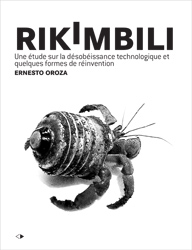
“Quand nous acceptons le critère bourgeois qui sanctionne la nécessité comme indigne et celui qui exprime ses besoins comme faible et vulgaire, nous participons à la réduction systématique de la créativité et de la liberté qui pourrait se traduire dans la culture contemporaine.” Ernesto Oroza
“PLOUGHSHARES AS TECHNOLOGICAL DISOBEDIENCE (CUBA)
Cite du design is a broad church. Whilst hordes of courtiers flocked around the Minister like starlings at sunset, copies of a subversive new book, by Ernesto Oroza, were being distributed by Cite’s publications team. Rikimbili – “a study of technological disobedience and other forms of re-invention” – describes how Cubans have adapted and recycled industrial objects during fifty years of US sanctions. The book’s title, Rikimbili, is named after a two-wheeled vehicle that started its life as a bicycle. The book is subversive because, for me anyway, it describes the kind of design we’ll be doing in the coming age of scarcity industrialism (a phrase of John Michael Greer). Design shows filled with shiny objects, by contrast, are best perceived as historical events about a pardigm that has passed. Write direct to obtain your copy of Rikimbili to: emilie.chabert at citedudesign dot com.”
John Thackara
from: doorsofperception.com
Statement of Necessity by Ernesto Oroza
Foreword: Gean Moreno
Paperback
Publisher: Alonso Art and BookSurge Publishing (November 11, 2008)
ISBN-10: 1439216657
ISBN-13: 978-1439216651
Book documenting the exhibition Statement of Necessity by Ernesto Oroza, at Alonso Art in November-December, 2008. The book features the 20 color photographs exhibited. www.alonsoart.com
NO WASTE 2003
Pentagram Papers 32. Pentagram Design, London, 2002. A project by Ernesto Oroza and Laboratorio de Creación Maldeojo with design by Fernando Gutiérrez and an introduction by Alex Marashian. This 2003 edition by the international agency Pentagram Design contains pictures of vernacular objects created as a result of economic penury.
More info at The Pentagram papers. Edited by Delphine Hirasuna, Pentagram Partners.
Featured on Wallpaper Magazine: http://www.wallpaper.com/gallery/art/the-pentagram-papers/17051794#29153
Featured on Cool Hunting: http://www.coolhunting.com/design/pentagram-no-waste.php
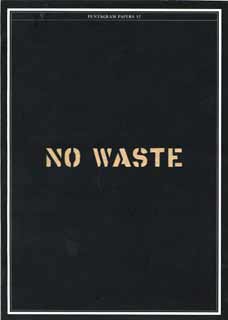
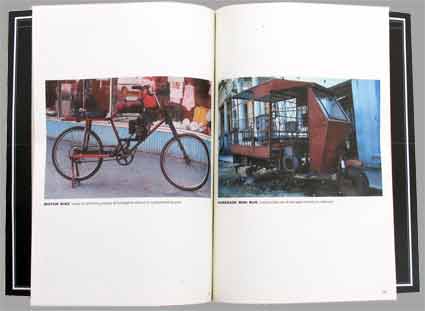
Objets réinventés: La création populaire à Cuba. 2002
Ernesto Oroza & Penélope de Bozzi
ISBN-10: 2862273198
ISBN-13: 978-2862273198
Paperback
Publisher: Alternative (March 21, 2002)
Oroza’s book, Objets réinventés: La création populaire à Cuba (Reinvented Objects: The People’s Creation in Cuba) encompasses eight years of research on the island’s material culture. This publication contains 200 pictures and texts on architecture, objects, home interiors and people’s graphic communications www.fnac.com / www.amazon.fr
